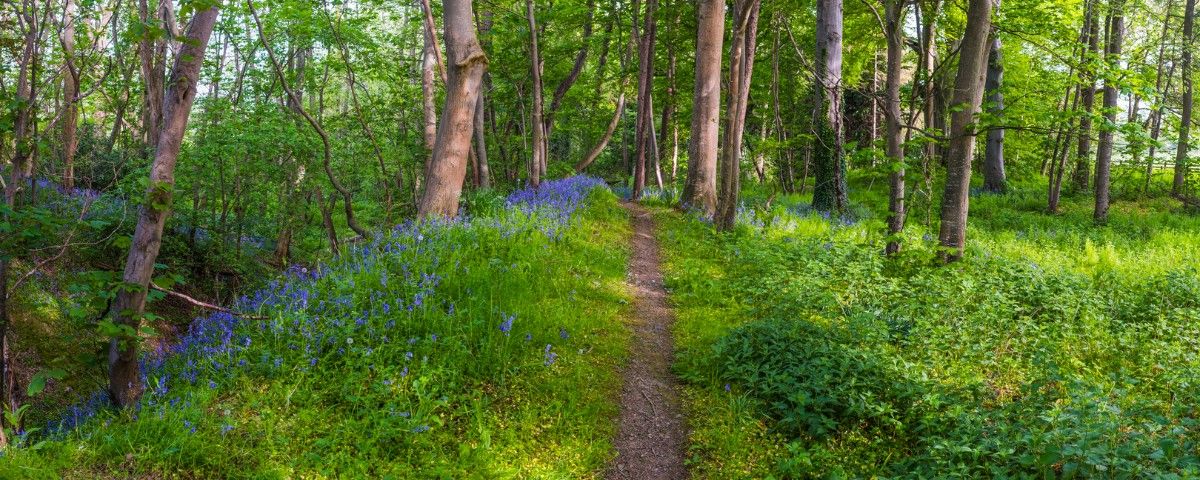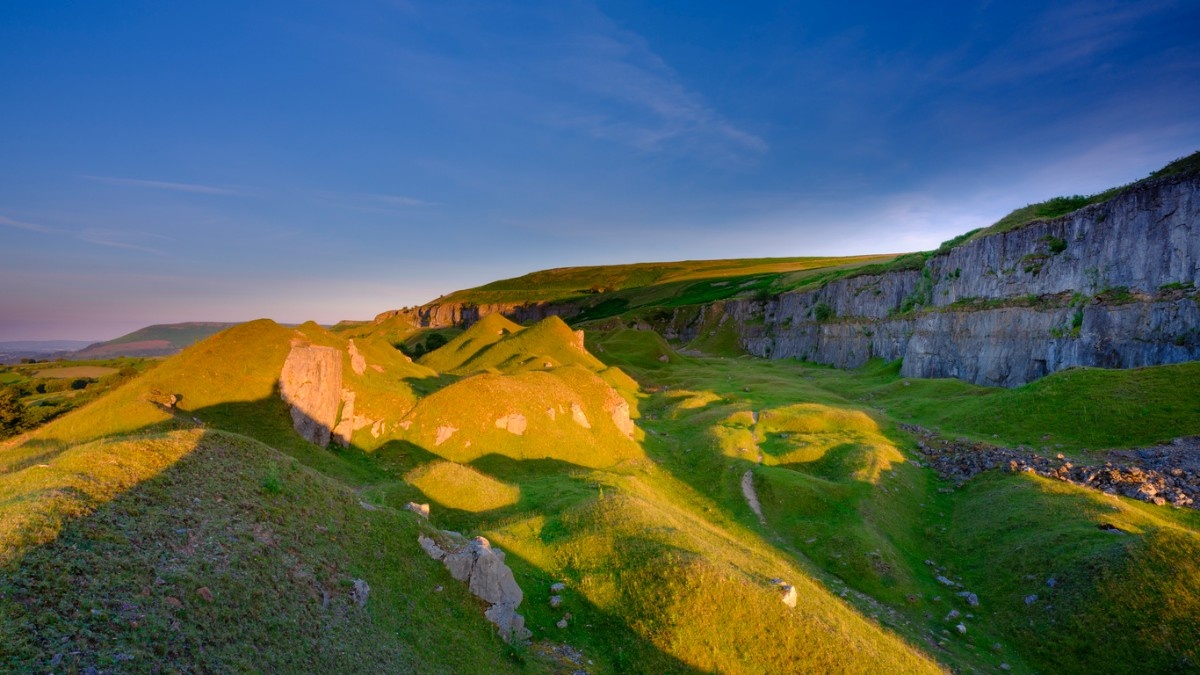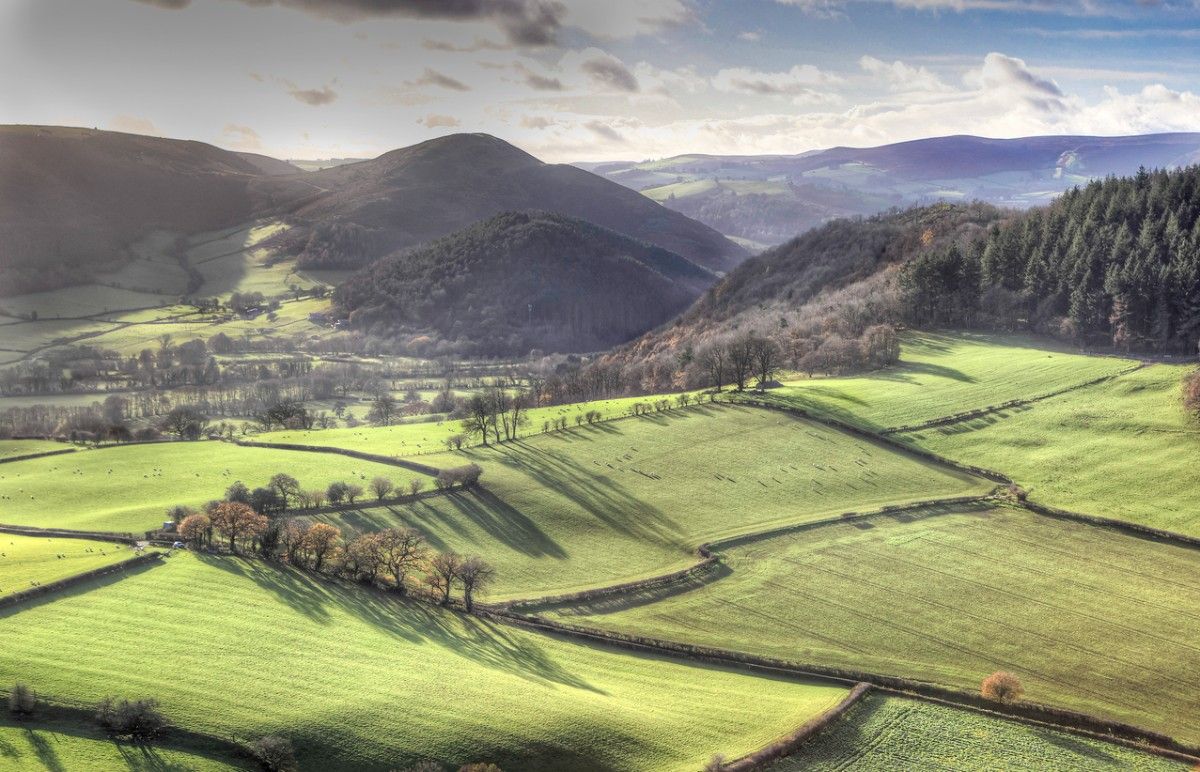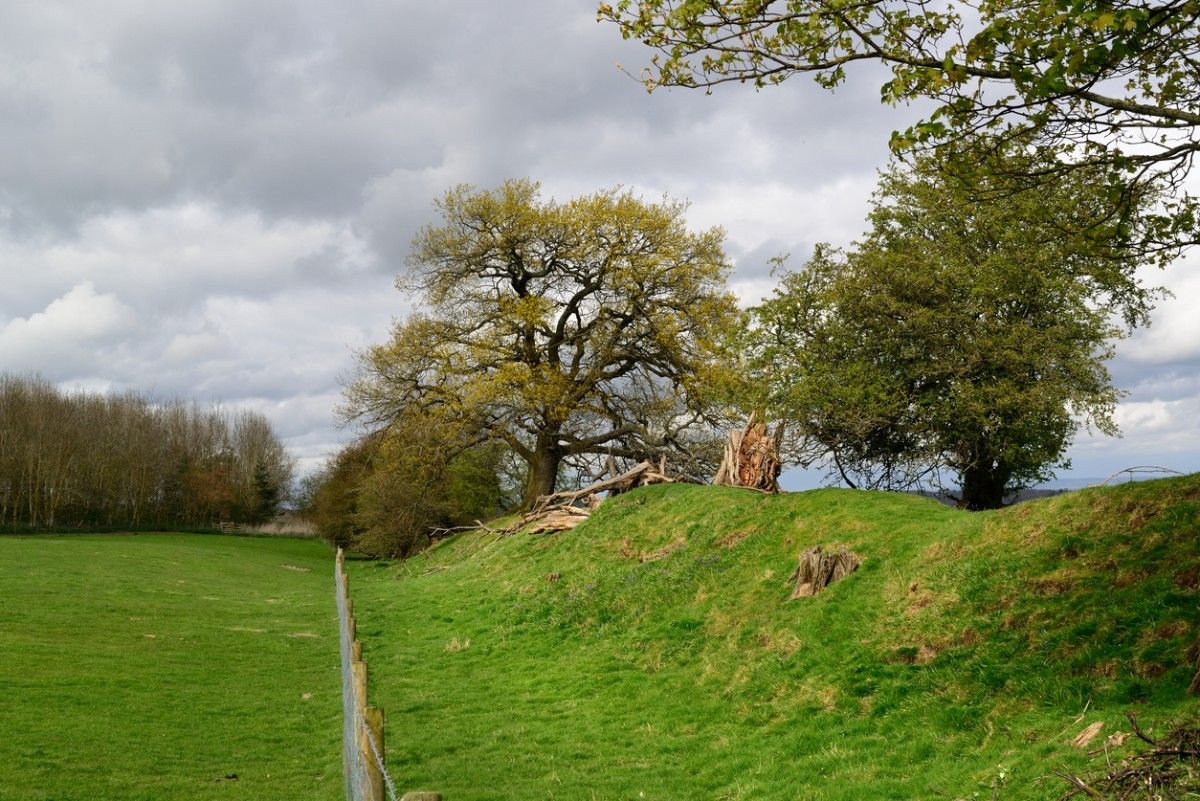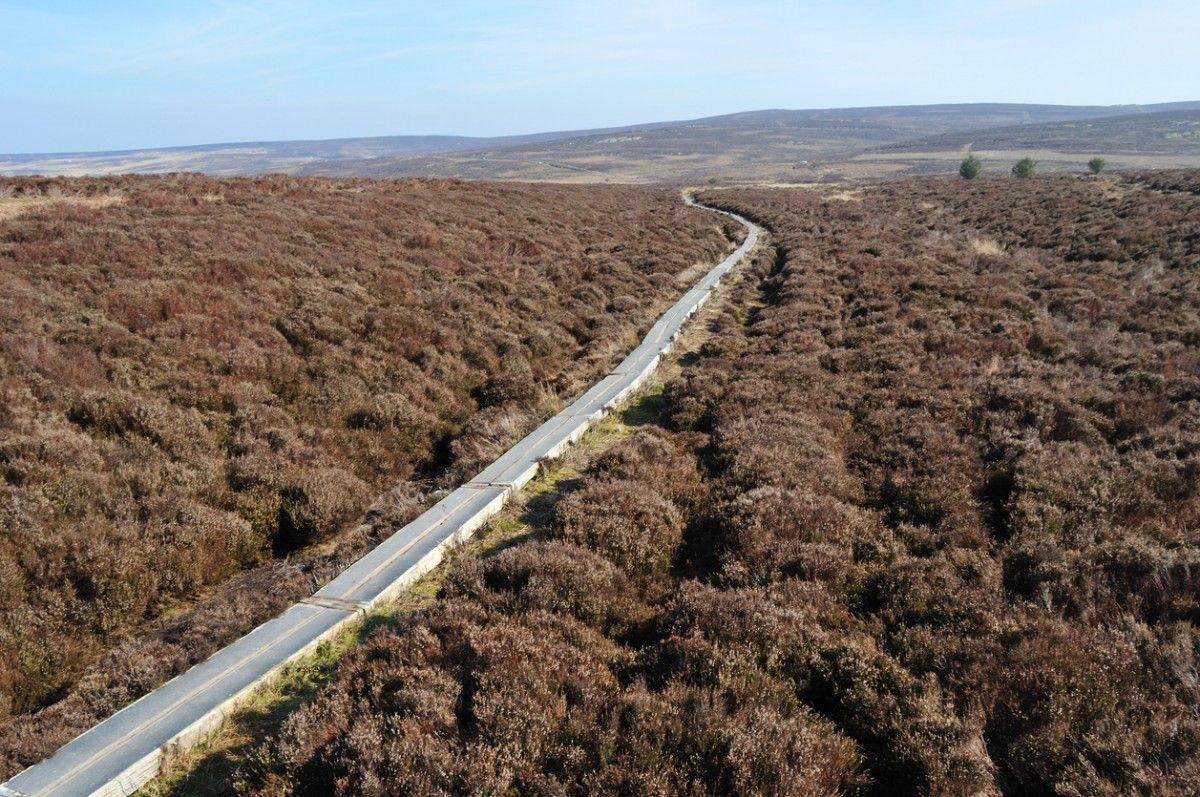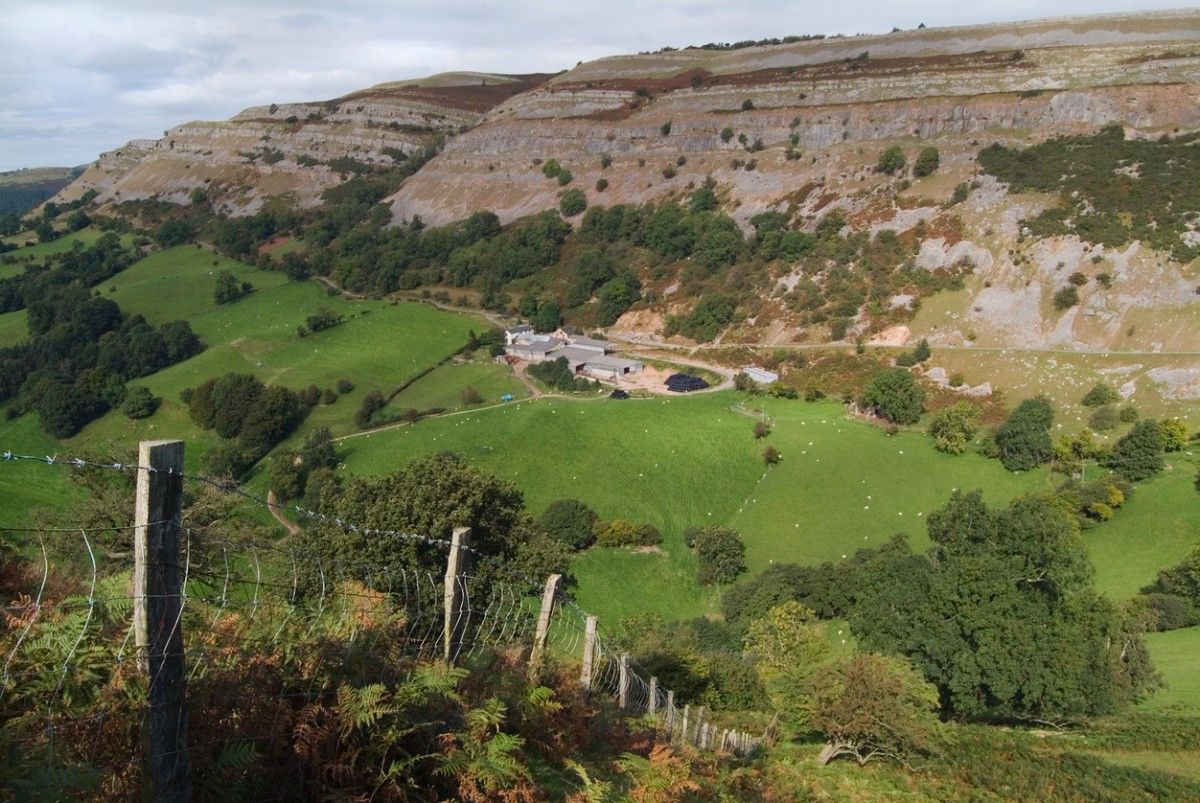Discovering the Enchanting Offa's Dyke Trail: A Hiker's Dream
Introduction
The Offa's Dyke trail is a long-distance footpath that winds its way through the stunning borderlands of England and Wales, offering hikers an unforgettable journey filled with breathtaking landscapes, rich history, and cultural heritage. Stretching 177 miles (285 km) from Sedbury Cliffs near Chepstow in the south to Prestatyn on the north coast of Wales, this iconic trail follows the ancient earthwork known as Offa's Dyke, which was built by King Offa of Mercia in the 8th century. As you embark on this incredible adventure, you'll discover a world of enchanting beauty, fascinating stories, and endless opportunities for exploration and self-discovery.
The Allure of the Trail
What makes the Offa's Dyke path so alluring to hikers from around the world? Perhaps it's the sheer diversity of the landscapes you'll encounter along the way, from the rolling hills and lush valleys of the Welsh Marches to the rugged mountains of the Brecon Beacons and the sweeping coastal vistas of the Clwydian Range. Or maybe it's the sense of history that permeates every step, as you follow in the footsteps of ancient kings, medieval pilgrims, and countless generations of farmers, shepherds, and travellers who have shaped this land over the centuries.
For many hikers, the appeal of the Offa's Dyke trail lies in the challenge it presents, both physically and mentally. Traversing 177 miles of varied terrain, often in changeable weather conditions, requires a certain level of fitness, determination, and resilience. But the rewards are more than worth the effort, as you immerse yourself in the stunning beauty of the natural world, push your limits, and discover new depths of strength and self-reliance.
The Joys of Slow Travel
One of the greatest joys of hiking the Offa's Dyke trail is the opportunity it provides for slow, immersive travel. In a world that often moves at a breakneck pace, the simple act of putting one foot in front of the other, day after day, can be a profound and transformative experience. As you walk, you'll have time to notice the small details that might otherwise pass you by - the delicate wildflowers that bloom along the path, the chirping of birds in the hedgerows, the changing light on the hills as the sun moves across the sky.
You'll also have the chance to connect with the local communities along the way, staying in cozy bed and breakfasts, enjoying hearty meals in village pubs, and exchanging stories with fellow hikers and friendly locals. These personal interactions and moments of connection are what make the Offa's Dyke trail such a rich and rewarding experience, one that stays with you long after you've completed your journey.
The Offa's Dyke path is more than just a long-distance hiking trail - it's a gateway to a world of natural wonder, cultural discovery, and personal growth. As you set out on this incredible adventure, you'll be embarking on a journey that will challenge you, inspire you, and change you in ways you never could have imagined. So grab your backpack, lace up your boots, and get ready to discover the enchanting beauty and endless possibilities of the Offa's Dyke trail.
Uncovering the Fascinating History of Offa's Dyke
The Origins of the Dyke
To truly appreciate the significance of the Offa's Dyke trail, it's essential to understand the history behind the ancient earthwork that gives the path its name. Offa's Dyke is a linear earthwork that runs along the border between England and Wales, stretching from the Severn Estuary in the south to the Irish Sea in the north. The dyke is named after King Offa of Mercia, who ruled the Anglo-Saxon kingdom of Mercia from 757 to 796 AD.
According to historical records and archaeological evidence, King Offa ordered the construction of the dyke as a means of defending his kingdom against the neighbouring Welsh kingdoms. The dyke served as a physical barrier, a symbol of Offa's power and authority, and a way to control trade and movement across the border. It's believed that the dyke was built in sections over a period of several years, with construction likely beginning in the late 8th century.
The construction of Offa's Dyke was a massive undertaking, requiring the labour of thousands of workers and the coordination of resources across a vast stretch of land. The dyke itself is made up of a ditch and rampart, with the ditch on the Welsh side and the rampart on the English side. In some places, the dyke is over 8 metres (26 feet) high and 20 metres (65 feet) wide, a testament to the skill and determination of the Anglo-Saxon engineers who built it.
The exact methods used to construct the dyke are still a matter of debate among historians and archaeologists. Some experts believe that the dyke was built using a combination of tools, including shovels, picks, and woven baskets for carrying soil and stones. Others suggest that the builders may have used more sophisticated surveying and engineering techniques, such as the use of sighting poles and water levels to ensure a consistent height and alignment along the length of the dyke.
The Legacy of Offa's Dyke
Despite its impressive scale and historical significance, much about Offa's Dyke remains a mystery. The exact purpose of the dyke, beyond its function as a defensive barrier, is still a matter of debate. Some historians believe that the dyke may have served as a symbolic boundary, marking the extent of Offa's power and influence. Others suggest that the dyke may have been used to control trade and movement across the border, or to protect against cattle raiding and other forms of cross-border conflict.
Over the centuries, Offa's Dyke has endured as a symbol of the complex and often turbulent history of the Welsh Marches. The dyke has been damaged and eroded in places, but much of it still survives today, a testament to the skill and determination of the Anglo-Saxon builders who created it. The Offa's Dyke path, which follows the course of the dyke for much of its length, offers hikers a unique opportunity to explore this fascinating piece of history and to connect with the rich cultural heritage of the borderlands.
The history of Offa's Dyke is a story of power, conflict, and cultural exchange, one that continues to captivate and inspire people to this day. As you walk the Offa's Dyke trail, you'll be following in the footsteps of the Anglo-Saxon warriors, Welsh princes, and countless generations of farmers, shepherds, and travellers who have shaped this land over the centuries. By uncovering the fascinating history of the dyke, you'll gain a deeper appreciation for the incredible feat of engineering and the complex cultural and political forces that have defined this unique and enchanting region.
Planning Your Offa's Dyke Adventure: Maps, Stages, and Logistics
Obtaining the Right Maps and Guides
When planning your Offa's Dyke walk, having the right maps and guides is essential for a safe and enjoyable journey. The official Offa's Dyke Path National Trail Guide, published by Aurum Press, is an excellent resource that provides detailed maps, route descriptions, and practical information for hikers. The guide breaks down the trail into manageable sections, making it easy to plan your daily stages and accommodation.
In addition to the official guide, there are several other maps and resources available, including Ordnance Survey maps, which provide detailed topographical information and can be useful for navigating off-trail sections or in poor weather conditions. Online resources, such as the official Offa's Dyke Path website and various hiking forums, can also provide valuable information and updates on trail conditions, closures, and other important notices.
The Offa's Dyke trail is typically divided into 12-14 stages, each covering between 10 and 15 miles per day. However, the exact number and length of stages can vary depending on your fitness level, hiking experience, and personal preferences. When planning your stages, consider factors such as the terrain, elevation gain, and the location of accommodation and resupply points.
Accommodation along the Offa's Dyke path ranges from cosy bed and breakfasts and guesthouses to camping and bunkhouses. Many hikers choose to book their accommodation in advance, especially during peak season, to ensure a comfortable place to rest and recover after each day's walk. Some popular options include the Offa's Dyke Centre in Knighton, which offers bunkhouse accommodation and a wealth of information about the trail, and the many charming pubs and inns that dot the route, offering hearty meals and a warm welcome to weary hikers.
Arranging Transportation and Luggage Transfers
Another important aspect of planning your Offa's Dyke adventure is arranging transportation to and from the trail, as well as luggage transfers between stages. Many hikers choose to start their journey in Chepstow, which is easily accessible by train or bus from London and other major cities. The northern terminus of the trail, in Prestatyn, is also well-connected by public transportation.
If you prefer not to carry all your gear with you on the trail, there are several companies that offer luggage transfer services along the Offa's Dyke path. These services allow you to hike with just a day pack, while your main luggage is transported to your next accommodation each day. This can be a convenient option for those who want to enjoy the trail without the added weight of a full backpack.
Planning your Offa's Dyke adventure requires careful consideration of maps, stages, accommodation, and logistics. By taking the time to research and prepare for your journey, you'll be able to fully immerse yourself in the stunning landscapes and rich history of the trail, without the added stress of last-minute planning or unexpected challenges. With the right resources and a bit of forward thinking, you'll be well on your way to an unforgettable hiking experience along one of Britain's most iconic long-distance trails.
Exploring the Trail's Highlights and Hidden Gems
The Stunning Landscapes of the Welsh Marches
One of the greatest draws of the Offa's Dyke trail is the incredible diversity of landscapes you'll encounter along the way. From the rolling hills and lush valleys of the Welsh Marches to the rugged mountains of the Brecon Beacons and the sweeping coastal vistas of the Clwydian Range, the trail offers a constantly changing backdrop of natural beauty.
As you walk through the borderlands of England and Wales, you'll pass through a patchwork of farmland, woodland, and open moorland, each with its own unique character and charm. The trail also takes in several Areas of Outstanding Natural Beauty (AONBs), including the Wye Valley, the Shropshire Hills, and the Clwydian Range, where you'll find some of the most stunning scenery in all of Britain.
Exploring Historic Sites and Landmarks
In addition to its natural wonders, the Offa's Dyke path is also steeped in history, with countless ancient sites and landmarks to discover along the way. One of the most impressive of these is Tintern Abbey, a 12th-century Cistercian monastery that stands in romantic ruin on the banks of the River Wye. The abbey has inspired poets and artists for centuries, and its soaring Gothic arches and ivy-clad walls are a testament to the skill and devotion of the medieval monks who built it.
Other historic highlights along the trail include the Iron Age hill forts of Heriri Mons and Caer Drewyn, which offer breathtaking views over the surrounding countryside, and the medieval castles of Chirk and Chepstow, which guard the northern and southern ends of the dyke, respectively. You'll also pass through charming market towns and villages, such as Hay-on-Wye, known for its bookshops and literary festival, and Knighton, the official "halfway point" of the trail.
Uncovering Hidden Gems and Local Secrets
While the Offa's Dyke trail is well-known for its major landmarks and tourist attractions, it's also full of hidden gems and local secrets waiting to be discovered. One of these is the Clun Valley, a picturesque stretch of the trail that winds through a secluded corner of Shropshire, past ancient stone circles and sleepy hamlets that seem frozen in time.
Another lesser-known highlight is the Llangollen Canal, a stunning feat of engineering that carries narrowboats across the River Dee via the Pontcysyllte Aqueduct, the longest and highest aqueduct in Britain. The aqueduct, which stands at over 125 feet tall and stretches for more than 1,000 feet, offers breathtaking views over the Dee Valley and is a must-see for any hiker on the Offa's Dyke path.
Exploring the highlights and hidden gems of the Offa's Dyke trail is an adventure in itself, one that will take you through some of the most beautiful and fascinating landscapes in all of Britain. From the stunning vistas of the Welsh Marches to the historic sites and landmarks that dot the route, there's always something new and exciting to discover along the way. By taking the time to uncover the trail's secrets and local treasures, you'll gain a deeper appreciation for the rich cultural and natural heritage of this unique and enchanting region.
Choosing the Best Time to Walk Offa's Dyke
Seasonal Considerations
When planning your Offa's Dyke walk, one of the most important factors to consider is the time of year. Each season brings its own unique challenges and rewards, and choosing the best time to walk will depend on your personal preferences, fitness level, and the type of experience you're looking for.
Spring (March to May) is a popular time to walk the Offa's Dyke trail, as the weather begins to warm up and the countryside bursts into bloom. The longer days and milder temperatures make for pleasant walking conditions, and the vibrant colours of wildflowers and fresh green foliage create a stunning backdrop for your journey. However, spring can also be a time of unpredictable weather, with frequent showers and cool temperatures, especially at higher elevations.
Summer (June to August) is the busiest season on the trail, with long days and generally settled weather attracting hikers from around the world. The warm temperatures and abundant sunshine make for ideal walking conditions, and the trail's many pubs and cafes are in full swing, offering refreshing drinks and hearty meals to weary hikers. However, the popularity of the trail during this time can also mean crowded paths and fully booked accommodation, so it's important to plan ahead and make reservations well in advance.
Autumn (September to November) is a magical time to walk the Offa's Dyke path, as the leaves turn to shades of gold and red and the crowds begin to thin out. The cooler temperatures and crisp, clear air make for comfortable walking conditions, and the stunning autumn colours create a breathtaking backdrop for your journey. However, the shorter days and increased likelihood of rain and mud can make for more challenging conditions, so it's important to come prepared with appropriate gear and clothing.
Winter (December to February) is the quietest time on the trail, with short days, cold temperatures, and the possibility of snow and ice making for challenging walking conditions. However, for experienced hikers who are properly equipped and prepared, winter can also be a time of breathtaking beauty and solitude, with frosty landscapes and clear, starry skies creating a truly magical atmosphere.
Other Factors to Consider
In addition to seasonal considerations, there are several other factors to keep in mind when choosing the best time to walk Offa's Dyke. One of these is the local events and festivals that take place along the trail throughout the year, such as the Hay Festival in late May/early June, which attracts thousands of visitors to the charming town of Hay-on-Wye for a celebration of literature and the arts.
Another factor to consider is the availability of accommodation and luggage transfer services, which can vary depending on the time of year. During peak season, it's important to book your accommodation well in advance to ensure a comfortable place to stay each night, and to arrange luggage transfers if you don't want to carry all your gear with you on the trail.
Choosing the best time to walk Offa's Dyke is a personal decision that depends on a variety of factors, from the weather and trail conditions to local events and festivals. By considering the pros and cons of each season, as well as your own preferences and walking style, you can plan the perfect Offa's Dyke adventure that suits your needs and interests. Whether you choose to walk in the vibrant springtime, the bustling summer, the colourful autumn, or the peaceful winter, you're sure to have an unforgettable experience on this iconic long-distance trail.
Navigating the Trail: Offa's Dyke Path Stages and Recommended Routes
Overview of the Trail
The Offa's Dyke Path is a long-distance walking trail that runs for 177 miles (285 km) along the border between England and Wales. The trail follows the ancient earthwork known as Offa's Dyke, which was built by King Offa of Mercia in the 8th century as a defensive fortification and boundary marker.
The trail is typically walked from south to north, starting in Sedbury Cliffs near Chepstow and ending in Prestatyn on the north coast of Wales. However, it can also be walked in the opposite direction, and many hikers choose to complete shorter sections of the trail rather than the entire route.
Breakdown of Stages
The Offa's Dyke path is typically broken down into 12-14 stages, each covering between 10 and 15 miles per day. The exact number and length of stages can vary depending on your fitness level, walking speed, and the location of accommodation and resupply points.
Here is a general breakdown of the stages, based on the official guidebook:
- Sedbury Cliffs to Monmouth
- Monmouth to Pandy
- Pandy to Hay-on-Wye
- Hay-on-Wye to Kington
- Kington to Knighton
- Knighton to Brompton Crossroads
- Brompton Crossroads to Buttington Bridge
- Buttington Bridge to Llanymynech
- Llanymynech to Chirk Castle
- Chirk Castle to Llandegla
- Llandegla to Bodfari
- Bodfari to Prestatyn
Each stage offers its own unique challenges and rewards, from the steep ascents and descents of the Black Mountains to the gentle hills and valleys of the Shropshire countryside. Along the way, you'll pass through a variety of landscapes, from ancient woodlands and rolling farmland to windswept moorland and dramatic coastal cliffs.
Recommended Routes
While the official Offa's Dyke path follows a set route along the border between England and Wales, there are many opportunities for side trips and detours along the way. Here are a few recommended routes and sections that offer particularly stunning scenery and interesting attractions:
The Wye Valley: This section of the trail, between Chepstow and Monmouth, follows the stunning River Wye as it winds through a picturesque valley of wooded hills and limestone cliffs. Highlights include the ruins of Tintern Abbey and the charming market town of Monmouth.
The Shropshire Hills: This Area of Outstanding Natural Beauty, between Knighton and Brompton Crossroads, offers some of the most beautiful and varied scenery on the entire trail. From the rolling hills and ancient woodlands of the Clun Valley to the dramatic ridge of the Long Mynd, this section is a must-see for any hiker on the Offa's Dyke path.
The Clwydian Range: This final section of the trail, between Llandegla and Prestatyn, follows the stunning Clwydian Range of hills, offering panoramic views over the surrounding countryside and coast. Highlights include the Iron Age hill forts of Moel Fenlli and Moel Arthur, and the charming town of Llangollen with its famous aqueduct and canal.
Navigating the Offa's Dyke Path can seem daunting at first, but by breaking the trail down into manageable stages and focusing on the highlights and recommended routes, you can create an itinerary that suits your interests and abilities. Whether you choose to walk the entire trail or focus on a particular section, you're sure to have an unforgettable experience on this iconic long-distance path, with stunning scenery, fascinating history, and endless opportunities for adventure at every turn.
Essential Gear and Preparation for Your Offa's Dyke Trek
Footwear and Clothing
When preparing for your Offa's Dyke walk, one of the most important considerations is your footwear and clothing. The right gear can make all the difference in your comfort, safety, and enjoyment on the trail.
For footwear, a sturdy pair of hiking boots with good ankle support and a thick, lugged sole is essential. Look for boots that are waterproof and breathable, with a comfortable fit that allows room for thick socks and potential swelling. It's also a good idea to break in your boots before your trip, wearing them on shorter walks and gradually increasing the distance to avoid blisters and discomfort.
In terms of clothing, the key is to dress in layers that can be easily added or removed depending on the weather conditions. A base layer of moisture-wicking material, such as merino wool or synthetic fabric, will help keep you dry and comfortable. A mid-layer of insulating material, such as fleece or down, will provide warmth, while a waterproof and windproof outer layer will protect you from the elements.
Other essential clothing items include a hat and gloves for cold weather, a sun hat and sunglasses for sunny days, and a pair of comfortable, quick-drying hiking trousers or shorts.
Backpack and Camping Gear
Depending on the length of your trip and your accommodation preferences, you may need to carry a backpack with camping gear and supplies. Look for a backpack with a capacity of 50-70 litres, with a comfortable, adjustable harness and a waterproof cover.
Essential camping gear includes a lightweight tent or bivy sack, a sleeping bag and mat, a camping stove and fuel, a headtorch or handheld torch, and a water filtration system. Other useful items include a multi-tool, a first-aid kit, a map and compass, and a portable charger for your electronic devices.
When selecting your camping gear, look for items that are lightweight, durable, and easy to pack and set up. It's also a good idea to test your gear before your trip, setting up your tent and cooking a meal to ensure that everything is in working order.
Food and Water
Proper nutrition and hydration are essential for maintaining your energy and health on the trail. Plan to carry enough food and water for each day, plus an extra day's supply in case of emergencies.
For food, focus on lightweight, non-perishable items that are high in calories and nutrients. Good options include trail mix, energy bars, dried fruits and nuts, and dehydrated meals that can be easily prepared with boiling water. Don't forget to pack a few treats and comfort foods as well, to boost your morale and reward yourself after a long day on the trail.
For water, plan to carry at least 2 litres per person per day, more in hot weather or strenuous terrain. A water filtration system or purification tablets can help you safely refill your supplies from streams and rivers along the way.
Preparing for your Offa's Dyke trek involves careful selection and testing of your gear, clothing, and supplies. By investing in quality items that are comfortable, durable, and suited to the conditions, you can ensure a safe and enjoyable experience on the trail. Remember to pack light, but also be prepared for any weather or emergency situations that may arise. With the right gear and preparation, you'll be ready to take on the challenge and adventure of the Offa's Dyke Path.
Immersing Yourself in the Local Culture and Communities
Staying in Local Accommodations
One of the best ways to immerse yourself in the local culture and communities along the Offa's Dyke path is to stay in local accommodations. From cozy bed and breakfasts to historic inns and pubs, there are plenty of options for experiencing the warmth and hospitality of the Welsh and English borderlands.
Many of these accommodations are located in charming villages and towns along the trail, offering a chance to explore the local shops, cafes, and attractions. Some may even offer packed lunches or evening meals, featuring locally sourced ingredients and traditional dishes.
When selecting your accommodation, look for places that are walker-friendly, with facilities for drying wet gear and storing muddy boots. Many places will also offer luggage transfer services, allowing you to hike with a lighter backpack and have your bags waiting for you at your next stop.
Interacting with Locals and Other Hikers
Another great way to immerse yourself in the local culture is to interact with the people you meet along the way. From fellow hikers to shopkeepers and pub owners, everyone has a story to tell and a unique perspective on life in the borderlands.
Don't be afraid to strike up a conversation or ask for recommendations on things to see and do in the area. Many locals are proud of their heritage and happy to share their knowledge and insights with visitors.
You may also have the chance to meet other hikers from around the world, sharing stories and experiences over a pint or a meal. The camaraderie and sense of community among long-distance hikers is one of the great joys of the Offa's Dyke trail.
Attending Local Events and Festivals
Throughout the year, there are many local events and festivals that offer a chance to experience the rich culture and traditions of the Welsh and English borderlands. From agricultural shows and food festivals to music and arts events, there's something for everyone.
Some notable events along the Offa's Dyke path include the Hay Festival, a literary festival held in the charming town of Hay-on-Wye each May, and the Llangollen International Musical Eisteddfod, a week-long celebration of music and dance held in the town of Llangollen each July.
Other events may be more localised, such as village fetes, farmers' markets, or traditional performances of music and dance. Keep an eye out for posters and flyers in local shops and pubs, or ask your accommodation hosts for recommendations.
Supporting Local Businesses and Economies
Finally, one of the best ways to immerse yourself in the local culture and communities along the Offa's Dyke trail is to support local businesses and economies. From buying supplies and souvenirs in local shops to eating and drinking in local pubs and cafes, every purchase helps to sustain the vitality and character of these unique places.
Many of these businesses are family-owned and operated, with deep roots in the local community. By supporting them, you're not only getting a taste of authentic local products and services, but also helping to preserve the traditional way of life in the borderlands.
Immersing yourself in the local culture and communities along the Offa's Dyke path is an essential part of the long-distance hiking experience. By staying in local accommodations, interacting with locals and other hikers, attending local events and festivals, and supporting local businesses and economies, you can gain a deeper appreciation and understanding of the unique heritage and character of the Welsh and English borderlands. So take the time to explore, engage, and enjoy all that these special places have to offer, and you'll come away with memories and experiences that will last a lifetime.
Respecting the Environment and Leaving No Trace
The Importance of Leave No Trace Principles
The Offa's Dyke trail passes through some of the most beautiful and ecologically sensitive landscapes in the UK, from the rugged mountains of the Brecon Beacons to the rolling hills of the Shropshire countryside. As hikers, it's our responsibility to protect and preserve these natural wonders for future generations by adhering to the principles of Leave No Trace.
Leave No Trace is a set of guidelines for minimising our impact on the environment while enjoying outdoor activities. The seven principles are:
- Plan ahead and prepare
- Travel and camp on durable surfaces
- Dispose of waste properly
- Leave what you find
- Minimise campfire impacts
- Respect wildlife
- Be considerate of other visitors
By following these principles, we can help to reduce erosion, protect fragile ecosystems, and ensure that the Offa's Dyke path remains a pristine and enjoyable experience for all who walk it.
Proper Waste Disposal
One of the most important aspects of Leave No Trace is proper waste disposal. This includes everything from litter and food scraps to human waste and toilet paper.
For litter, the rule is simple: pack it in, pack it out. Bring a small trash bag or container with you on the trail, and carry out all of your rubbish, including food scraps and packaging. Don't leave anything behind, even if it's biodegradable, as it can still attract wildlife and disrupt natural ecosystems.
For human waste, the best practice is to use designated toilet facilities wherever possible. If none are available, choose a spot at least 200 feet (60 metres) from water sources, trails, and campsites. Dig a small hole, at least 6 inches (15 cm) deep, and bury your waste and toilet paper. Use biodegradable toilet paper or natural materials like leaves and moss, and pack out any non-biodegradable items.
Minimising Campfire Impacts
Campfires are a classic part of the outdoor experience, but they can also have a significant impact on the environment if not managed properly. In many areas along the Offa's Dyke trail, campfires are not permitted due to the risk of wildfire and damage to sensitive ecosystems.
If you do choose to have a campfire where allowed, follow these guidelines:
- Use established fire rings or pits wherever possible
- Keep fires small and contained
- Use only dead and down wood, or bring your own firewood from outside the area
- Burn all wood and coals to ash, and make sure the fire is completely extinguished before leaving
Alternatively, consider using a camping stove for cooking and warmth, which has a much lower impact on the environment.
Respecting Wildlife and Habitats
The Offa's Dyke path is home to a wide variety of wildlife, from rare birds and butterflies to larger mammals like deer and badgers. As hikers, it's our responsibility to respect these creatures and their habitats by minimising our disturbance and impact.
Some tips for respecting wildlife on the trail include:
- Observe animals from a distance, using binoculars or a camera zoom lens
- Do not feed or approach wildlife, as this can alter their natural behaviour and make them dependent on human food
- Stay on designated trails and avoid trampling vegetation or disturbing nesting sites
- Keep dogs on a leash and under control at all times
- Be quiet and respectful in areas known for wildlife activity, especially during breeding seasons
Respecting the environment and leaving no trace are essential responsibilities for all who walk the Offa's Dyke trail. By following the principles of Leave No Trace, we can help to protect the natural beauty and ecological integrity of this incredible landscape for generations to come. So plan ahead, pack out your waste, minimise your impact, and enjoy the trail with respect and reverence for all the wonders it holds. Together, we can ensure that the Offa's Dyke path remains a treasured and sustainable resource for all who seek its challenges and rewards.
Related Articles

Let us know you agree to cookies
We use marketing, analytical and functional cookies as well as similar technologies to give you the best experience. Third parties, including social media platforms, often place tracking cookies on our site to show you personalised adverts outside of our website.
We store your cookie preferences for two years and you can edit your preferences via ‘manage cookies’ or through the cookie policy at the bottom of every page. For more information, please see our cookie policy.
